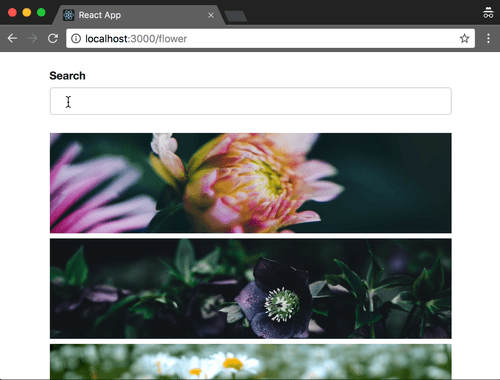

GitHub - palmerhq/router-suspense: The suspense-friendly minimalistic sister of...
source link: https://github.com/palmerhq/router-suspense
Go to the source link to view the article. You can view the picture content, updated content and better typesetting reading experience. If the link is broken, please click the button below to view the snapshot at that time.
README.md
Router Suspense
A suspense-friendly minimalistic sister of React Router.
npm i router-suspense
As of now, this is a very basic router that works in async-land.
Playing with Suspense
This router will work in React 15+. However, If you want to play around with suspense features, you'll need to enable suspense somehow. That means either building React yourself. Or, using this handy dandy starter we made.
https://github.com/palmerhq/react-suspense-starter
API
The API is basically the core of React Router 4.
<Router>
Exactly the same as RR4's <BrowserRouter>
children: React.ReactNode
import React from 'react'; import { unstable_createRoot as createRoot } from 'react-dom'; import { Router } from 'router-suspense'; import App from './App'; const root = createRoot(document.getElementById('app')); const render = Comp => { root.render( <Router> <Comp /> </Router> ); }; render(App);
<Route>
Render prop component to conditionally render based on the URL. If present, it uses ReactDOM.unstable_deferredUpdates to wait for any suspense jazz to happen on the next route before making the transition.
Route Props
render: ((props) => React.ReactNode): Passeshistory,location,matchas a render prop. Only renders whenpathmatches the current location.path: stringPath to match. Same as RR4.exact: boolean = falseSame as RR4.
import React from 'react' import { Route, Link } from 'router-suspense' export const Nav = () => ( <nav> <Link to="/">Home</Link> <Link to="/dashboard">Dashboard</Link> </nav> ) export const App = () => ( <div> <nav> <Link to="/">Home</Link> <Link to="/dashboard">Dashboard</Link> <Link to="/user/123">User</Link> </nav> <Route path="/" exact render={() => <div>Home</div>} /> <Route path="/dashboard" exact render={() => <div>Dashboard</div>} /> <Route path="/user/:id" exact render={({ match }) => <div>User {match.params.id} </div>} /> </div> )
<Link>
Link works like React Router 4's. You give it a path, it renders an <a>, but does a client-side transition by calling history.push(path) under the hood.
to: stringThe relative path to link to
import React from 'react' import { Link } from 'router-suspense' export const Nav = () => ( <nav> <Link to="/">Home</Link> <Link to="/dashboard">Dashboard</Link> </nav> )
withRouter(Comp: Component)
A higher-order component that hooks into Router context. Same as RR4.
import React from 'react' import { Link } from 'router-suspense' const BackButton = ({ history }) => ( <div> <button onClick={() => history.goBack()}>Back</button> </div> ) export default withRouter(BackButton)
Inspiration
A lot of this code is taken straight from React Router and React Training's MiniRouter lecture.
Authors
- Jack Cross (@crosscompile)
- Jared Palmer (@jaredpalmer)
Copyright © 2018 The Palmer Group.
MIT License
Recommend
About Joyk
Aggregate valuable and interesting links.
Joyk means Joy of geeK
